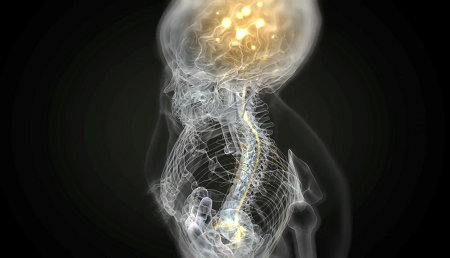Meningitis: Overview
Meningitis is an infection of the lining (meninges) and the fluid that cover the outside of the brain and spinal cord. The infection can spread into the brain tissue and cause brain damage in about 10% of cases. The disease is fatal in another 10% of cases. A viral form of meningitis exists but is generally less serious.
- understand what's happening to your body
- see your health summarized and in detail
- learn what you should be doing right now
Incidence; Causes and Development
In 2003, meningitis was affecting about 3,000 people in the United States each year, and the number of cases in those aged 15 to 24 had nearly doubled in the previous 10 years.
There are two main causes:
- Viral meningitis – there are several viruses that can cause viral meningitis, which is not treatable with antibiotics. It is a seasonal illness, with most cases occurring during the summer and early fall. It can be just as painful as bacterial meningitis, but is usually not as serious or damaging.
- Bacterial meningitis – this is caused by several different bacteria. Pneumococcus and E. Coli are common in infants and children. Meningococcus is common in college students or military personnel living in dorms. These are treatable with IV antibiotics, but sometimes cause brain damage even if treated early.

Meningococcal bacteria are around us all the time. Even healthy people may have the bacteria in their nose or throat, and usually this does not cause disease. In rare cases, the bacteria can get into the blood or brain, and cause serious illness.
Meningococcal bacteria are carried in saliva or droplets from the nose of an infected person. Sneezing, coughing, kissing, or sharing cigarettes, food, drinks, or other things that contain saliva can all help to pass the bacteria from one person to another. From the time the bacteria get into a person's mouth or nose, it may take from two to ten days for the person to become sick. The average time is three to four days.
Many people will get the bacteria when they are children and will develop life-long protection by the time they are teenagers.
Signs and Symptoms
The main symptoms are:
- Fever – will usually be high, over 103°F.
- Severe headache – this is not a typical headache; it is extremely painful. It occurs because the infected lining of the brain gets severely inflamed.
- Vomiting – the irritation in the brain triggers persistent vomiting (more than just a few times).
- Neck pain and stiffness – this does NOT mean sore throat pain in the front of the neck. It refers to severe pain in back of the neck. Looking down at your stomach (stretching the back of your neck) will cause severe pain. Some kids will refuse to even look down at all. They will keep their neck rigidly stiff. This occurs because the lining of the spinal cord is connected to the lining of the brain. When this infected and inflamed lining is stretched by looking down, it causes severe pain.
- Photophobia – this means that light hurts your eyes. Meningitis will cause someone to refuse to look into light, especially the bright sunlight.
In infants, you cannot determine if they have neck stiffness because they are too young to communicate this. Severe, inconsolable irritability and/or lethargy (meaning limp, lifeless, won't open eyes to focus on you) are signs of any severe infection, including meningitis.
If there is infection in the blood, a purplish skin rash that looks like bruising may also occur. By the time this rash appears the infection is very serious and the person must be treated as soon as possible.
Diagnosis and Tests
If the doctor decides that there is a chance of meningitis being present, the doctor will recommend a spinal tap. There is no way to diagnose meningitis without a spinal tap.
Complications
Severe cases – especially those untreated or treated too late – can cause deafness, paralysis, and mental retardation.
On This Page
Meningitis:Signs, symptoms & indicators of Meningitis:
Symptoms - Skeletal
Conditions that suggest Meningitis:
Aging
Click to see sample report
Your body is a highly complex, interconnected system. Instead of guessing at what might be wrong, let us help you discover what is really going on inside your body based on the many clues it is giving.
Our multiple symptom checker provides in-depth health analysis by The Analyst™ with full explanations, recommendations and (optionally) doctors available for case review and answering your specific questions.
KEY







